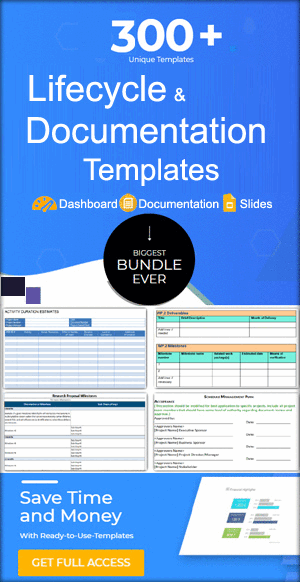Onboarding Process Checklist

A well-structured onboarding process checklist ensures a smooth and effective transition for new employees. It streamlines pre-boarding, first-day orientation, role-specific training, and ongoing support, boosting engagement and retention. Organizations using an employee onboarding checklist experience increased productivity and stronger workplace culture. This guide covers a proven onboarding checklist template to enhance your hiring strategy and reduce turnover.

Why a Structured Onboarding Process Matters:
Many companies struggle with employee retention and productivity due to a lack of a structured onboarding process. Studies show that organizations with a standardized onboarding checklist experience 50% higher new hire productivity and 82% better retention rates. Yet, many HR teams rely on fragmented processes, leading to confusion, disengagement, and early resignations. A comprehensive onboarding checklist template can bridge this gap and create a smooth, engaging experience for new hires.
Related Article: Agile Project Planning Template
The Cost of Poor Onboarding:
Consider this scenario: A new hire joins a company excited about their role, but on the first day, they find no workstation set up, no structured training, and unclear expectations. They feel lost and disengaged. Within six months, they leave. This results in a costly turnover—estimated to be at least 30% of the employee’s annual salary.
An ineffective employee onboarding checklist not only affects retention but also impacts team morale and company culture. A poor onboarding experience can make employees feel undervalued, reducing overall engagement. According to research, only 12% of employees strongly agree that their company does a great job onboarding new hires. This means that most organizations fail in this crucial process.
Related Article: project implementation plan template
A Detailed Onboarding Process Checklist:
A well-structured onboarding template ensures a seamless transition for new employees, making them feel welcomed, valued, and productive. Below is a proven step-by-step employee onboarding template that covers everything from pre-boarding to the first 90 days.
Pre-Boarding (Before Day 1)
1.Send a welcome email with company details and expectations.
2. Provide access to an onboarding checklist template to guide them.
3. Set up email accounts, software access, and IT equipment.
4 .Share an employee handbook, HR policies, and compliance documents.
5. Schedule introductions with key team members.
6 .Assign a mentor or onboarding buddy.
First Day: Making a Strong First Impression
1.Welcome the new hire with a personal greeting.
2. Give an office tour (or virtual tour for remote employees).
3. Set up a workstation with necessary tools and access credentials.
4. Provide an overview of company culture, mission, and values.
5. Conduct an HR session covering payroll, benefits, and policies.
6. Have a casual team lunch or virtual meet-up.
First Week: Laying the Foundation for Success
1. Define clear job responsibilities and performance expectations.
2. Schedule training sessions tailored to the role.
3. Introduce the employee onboarding checklist to track progress.
4. Set short-term goals and review KPIs.
5. Encourage open communication and feedback.
6. Check-in with the manager and mentor for early concerns.
First 30 Days: Ensuring Engagement and Productivity
1. Provide in-depth training on systems and tools.
2. Schedule regular 1:1 check-ins with managers.
3. Review progress using an onboarding template.
4. Foster peer relationships through team-building activities.
5. Address any challenges and provide constructive feedback.
6. Encourage self-learning through company resources.
First 90 Days: Driving Retention and Growth
1. Conduct a formal 30-60-90 day review meeting.
2. Evaluate performance and provide career development insights.
3. Gather employee feedback on the onboarding checklist template.
4. Recognize achievements and contributions.
5. Discuss long-term goals and career growth opportunities.
6. Reinforce company culture and engagement initiatives.
Key Benefits of Using an Onboarding Checklist Template:
1. Ensures consistency across all new hires.
2. Reduces administrative workload for HR teams.
3. Enhances new hire engagement and productivity.
4. Provides a structured roadmap for employee success.
5. Improves compliance with company policies and regulations.
Related Article: Work Order Template
Personal Experience:
I have used this employee onboarding template for years, and I personally love how it streamlines the entire process. It ensures no crucial steps are missed, keeps new hires engaged, and provides a clear structure for both HR teams and employees. When implemented correctly, this onboarding process checklist fosters a sense of belonging and confidence in new hires, making their transition smoother and more effective.
Final Thoughts:
A well-designed onboarding process checklist helps HR professionals build a strong foundation for long-term employee success. Companies that invest in structured employee onboarding checklists create a welcoming environment, boost productivity, and improve retention rates.
If your company is struggling with high turnover or disengaged employees, it’s time to implement an effective onboarding template. The results will be visible in increased retention, improved performance, and a stronger workplace culture.
Does your company have a structured onboarding checklist template? If not, now is the perfect time to create one and revolutionize your onboarding process.
Related Article: Staff management
FAQ’s
What should be included in an onboarding checklist?
An onboarding checklist should include pre-boarding tasks, first-day introductions, role-specific training, compliance documentation, mentorship programs, performance goals, and regular check-ins to ensure a smooth transition.
What is the onboarding process steps?
The onboarding process includes pre-boarding, first-day orientation, role-specific training, performance monitoring, and continuous engagement over the first 90 days to ensure employee integration and success.
What are the 5 C’s of effective onboarding?
The 5 C’s of effective onboarding are:
- Compliance – Completing necessary paperwork and policies
- Clarification – Defining roles and expectations
- Culture – Introducing company values and mission
- Connection – Building relationships with colleagues and mentors
- Check-ins – Regular follow-ups for feedback and growth



